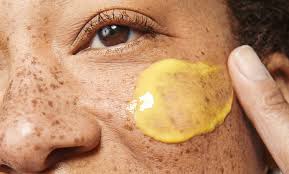
How to Improve Your Skin While Waiting for Retinol to Kick In
Retinol is widely celebrated in the skincare world — and for good reason. It’s a powerful ingredient renowned for its ability to reduce fine lines, improve texture, and even out skin tone.
However, if you’re new to retinol, you might find that it makes your skin look worse before it looks better.
This temporary phase can be frustrating, but it’s a common part of the process as your skin adapts.
If you’ve started using retinol and noticed dryness, redness, peeling, or tightness, don’t worry — you’re not alone.
These side effects, often dubbed the “retinol ugly phase,” are normal and usually subside within a few weeks.
But while you wait for your skin to adjust, there are many effective steps you can take to support your skin’s health and minimize discomfort.
In this guide, we’ll explore how to properly introduce retinol into your routine, what you can do to care for your skin in the meantime, and the best complementary skincare ingredients to use alongside retinol.
We’ll also cover common questions such as how long adaptation takes and how to protect your skin throughout the process.
Why Retinol Can Make Your Skin Look Worse at First
Retinol speeds up cell turnover — it encourages your skin to shed dead cells and generate new ones faster.
While this leads to fresher, smoother skin over time, the initial acceleration can cause your skin’s surface to become irritated and flaky.
This “retinol ugly phase” typically involves:
Dryness and flaking
Redness and inflammation
Tightness and itchiness
Increased sensitivity to sunlight and environmental factors
Everyone experiences this adjustment period to some degree, especially those with sensitive or dry skin.
The key is to manage it properly to avoid excessive irritation and ensure you get the long-term benefits without damaging your skin barrier.
How to Introduce Retinol to Your Routine for Best Results
Many people make the mistake of rushing retinol use in hopes of faster results, applying it nightly right from the start.
Unfortunately, this often backfires by overwhelming the skin and causing severe irritation.
The best approach is slow and steady:
Start Slow — Begin by applying retinol just once per week.
Build Tolerance — After one or two weeks, increase to twice per week.
Gradual Increase — Continue increasing frequency gradually, aiming for three times per week or more as your skin allows.
Always apply retinol products at night, since sun exposure can degrade retinol and reduce its effectiveness. Pair retinol with a moisturizer immediately afterward to mitigate dryness.
Patience is essential here — although it can be tempting to push your skin, gradual introduction ensures you maintain skin health while benefiting from retinol’s powerful effects.
Preparing Your Skin Before Applying Retinol
Proper preparation makes a big difference in how your skin tolerates retinol. Here’s a step-by-step guide:
Cleanse Thoroughly — Start with a clean face free of makeup, oils, and other products.
Dry Your Skin Completely — Retinol should be applied to dry skin to prevent it from penetrating too deeply and causing irritation.
Apply a Pea-Sized Amount — Use a small amount and gently massage it into your skin using circular motions.
Follow With a Moisturizer — Hydrating ingredients help reinforce your skin’s barrier and soothe any tightness.
Protect Your Skin — In the morning, always apply a broad-spectrum sunscreen of SPF 30 or higher. This step is non-negotiable because retinol increases photosensitivity.
If you have any concerns or skin conditions, consulting a dermatologist before starting retinol is highly recommended.
How Long Does It Take for Skin to Adapt to Retinol?
Typically, your skin will begin to adapt to retinol within three to four weeks.
During this period, you may notice redness, peeling, and dryness, but these symptoms should gradually lessen as your skin builds tolerance to retinoic acid, the active form of retinol.
If side effects persist beyond a month or worsen significantly, consider switching to a lower concentration of retinol or discontinuing use altogether.
In such cases, seek advice from a healthcare professional to prevent lasting damage.
Hydrating While Using Retinol: Should You Use Hyaluronic Acid?
Yes! Hyaluronic acid is an excellent companion to retinol. It’s a natural humectant, meaning it attracts and retains water in the skin, helping to counterbalance retinol’s drying effects.
Using a serum or moisturizer rich in hyaluronic acid can strengthen your skin’s moisture barrier and reduce irritation.
Many skincare enthusiasts recommend applying hyaluronic acid before retinol to create a hydrated base, or layering it on afterward for extra hydration.
Either way, it’s a win-win for skin health.
Can You Layer Serums Over Retinol?
You can, but with caution. Avoid serums containing potentially irritating ingredients such as:
Salicylic acid
Glycolic acid
Other chemical exfoliants or peels
These ingredients can compound retinol’s drying and irritating effects.
When layering multiple products, apply from the thinnest to thickest consistency to allow proper absorption and prevent barriers that block active ingredients.
The “Retinol Ugly”: What Is It and How to Handle It
The term “retinol ugly” refers to the temporary worsening of skin condition — redness, flaking, itchiness — when first using retinol.
This reaction is a normal sign your skin is renewing itself, but it can feel discouraging.
To ease this phase:
Use gentle, fragrance-free cleansers and moisturizers.
Avoid harsh exfoliants or irritants.
Keep sun exposure to a minimum and always use sunscreen.
Use barrier-repair ingredients like ceramides and niacinamide to calm and restore the skin.
Remember: the “retinol ugly” usually lasts no more than 3-4 weeks. After that, your skin should look clearer, smoother, and healthier.
Additional Tips for a Smooth Retinol Experience
Don’t Mix Retinol With Vitamin C at Night: These ingredients work better when used at different times or on alternate days to avoid irritation.
Listen to Your Skin: If your skin feels overly irritated, cut back on frequency or concentration.
Stay Consistent: The benefits of retinol come with regular use over months, not days. Be patient and persistent.
Summary
Retinol is a transformative skincare ingredient, but it requires patience and proper care during the adjustment phase.
By introducing retinol gradually, hydrating your skin with ingredients like hyaluronic acid, protecting your skin from the sun, and avoiding harsh products, you can minimize discomfort and maximize results.
With the right approach, your skin will emerge stronger, more radiant, and more youthful — making all the temporary challenges well worth it.


